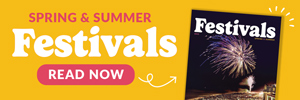I’ve had samples galore to evaluate and many were quite good, outside the mainstream and favorably priced. How about a Prosecco to start? Bisol Crede Prosecco di Conegliano-Valdobbiadene Brut Superiore DOCG is one of my go-to sparklers. The producer, Desiderio et Figlio, has a range of fairly priced Prosecci including Extra Dry (remember, in sparklers extra dry is actually sweeter than Brut), Brut and Extra Brut, plus Rosé, Spumante and Eau de Vie. The Crede rates 88-90 with most recent vintages coming in at 90. I award a price point to 91 if you buy it under $17.
Light straw-colored, with persistent tiny bead, it opens with a floral nose and some citrus aromas. On the crisp, smooth palate look for pears, apples and mineral notes. These can simply be stored in a cool closet, because they are so enjoyable by such a broad range of folks they will disappear quickly. Wise buyers who entertain will buy a case. Sample it first, of course; I could be a paid shill. While I’m on it, the producer claims Bisol Crede makes the perfect Bellini. I add, especially if one uses fresh, extra-ripe local peaches. Tuck that away for next summer.
Crede is one of a very few top-line Prosecci not made of 100 percent Glera. The producer adds a little Pinot Blanc and some Verdiso to the wine. These folks have been in the biz a long time. Today’s is the 21st generation working Bisol. I also sampled Ponte Prosecco di Treviso, an Extra Dry that was well made; I rate it 88. Sadly, none is available around here so there is no price comparison. Bacio della Luna Extra Dry Prosecco won several medals over the past few years including a gold at Concours Mondial in 2014. Another delightful Spumante for those who prefer less-dry sparklers. Again, it is a tough find. I found some in Minnesota, but they don’t ship to Delaware. Thank Dover for that.
It’s been a long time since I visited the following sparkler descriptors: Doux means the wine has over 50 grams per liter residual sugar (g/L) or 2 tsp/5 oz glass, more than 120 calories per glass. Demi Sec 8.3; Dry 5.3; Extra Dry 2.8; Brut 2, or about 1/2 tsp sugar/5 oz glass, say 95 calories; Extra Dry 1; and Brut Nature aka Brut Zero, less than 3 g/L. Wine for blending sparklers is very tart, so a “dosage” (a mixture including sugar) is added before secondary fermentation. Go here for complete information: www.winefrog.com/definition/87/dosage. By comparison, vodka and soda has 0 g/L; the calories come from alcohol. A Starbucks 2 percent Grande Latte has 17 g/L, and Jack and Coke has 33. This article came up during research: winefolly.com/tutorial/best-champagne-on-any-budget. For those who truly enjoy sparkling wine, this is biblical. However, take it with a g/L of sugar and please keep reading until you have finished the paper, ads and all.
Plan ahead for the holidays and purchase a bottle or two of Ehlers Cabernet Franc for your wino pals who prefer roads less taken. Barbara and I had the pleasure of an Ehlers Estate Cabernet Franc 2015. Emmy Fjerstad at Jarvis Communications recommended it. Cab Franc is mostly used as a blending wine in the U.S. It is the staple in France for Saumur-Champigny and Chinon from the Loire Valley. Ehlers Estate in St. Helena, Calif., has found the proper high-elevation Napa terroir to produce stand-alone, lovely Cab Franc. The past several vintages are 88 points or better. Very dark purple with ruby rim, dark fruit, tobacco leaf, white pepper, firm tannin, herbal finish. Winemakers notes say brown butter. This is 89 points under $65; needs time. Those who prefer French should locate Domaine Charles Joguet Clos de la Dioterie 2014, 93 points McD, findable under $45, ready now-2025. Dark cherry colored, red fruit, slightly smoky with pencil shavings enhanced by lovely pepper aromas riding a finely structured frame with smooth tannins. Acidity supports long, clean finish. Both are worth the search.

















































